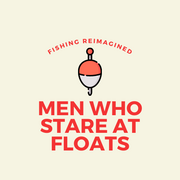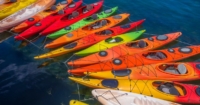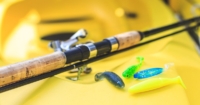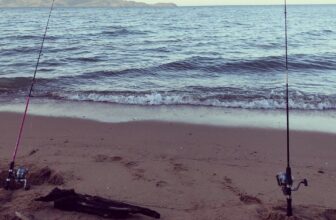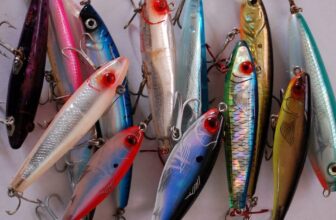Some links on this page are affiliate links, which do not impact our impartiality. We recommend the best product and then find out if it is available through one of our partners.
Fishing from a kayak is a different experience to fishing from a boat and the shore. It sits somewhere in between. You get all the flexibility of boat fishing (particularly closer in to shore) and an ability to reach places you can’t get to from the shore. It gives you access to areas other anglers simply cannot reach. That’s what makes it so exciting!
However you are giving up an element of stability and security, so it’s not to be taken lightly. From choosing the right kayak to understanding the prevailing conditions and the most effective kayak fishing setup, we’re here to help you understand the basics of kayak fishing.
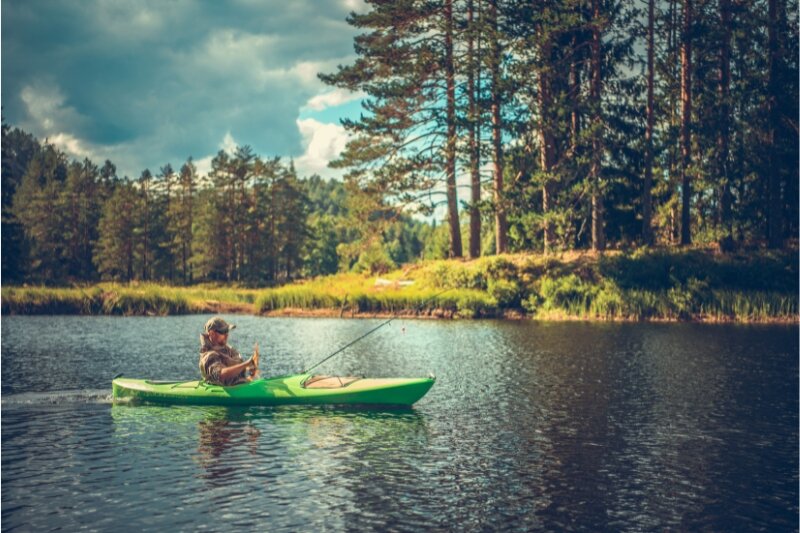
So whether you’re in the market for one of the best inflatable fishing kayaks or a top of the range sea-specific fishing kayak these tricks and tips should help you get setup and maximise your chances of catching.
Table of contents
How do I fish from a kayak?
To fish from a kayak you first need to make sure your kayak is seaworthy (check for any holes or leaks) and that you have all the necessary equipment – you’ll find what you need below, but kayak fishing rods, rod holders, tackle, a lifejacket and paddle are all essential.
Next up, a location or series of marks. Kayaks are fantastic for reaching shallow marks near the shore otherwise inaccessible to both boat and shore anglers. Inlets, bays, coves and rocky formations you’ve always deemed un-fishable. Make a note of them all and highlight what you believe the ideal conditions will be.
Water flow and tide can seriously impact your fishing. Areas only accessible at high tide can leave you stranded and estuaries or bays with a high volume of water can be dangerous, so pay close attention.
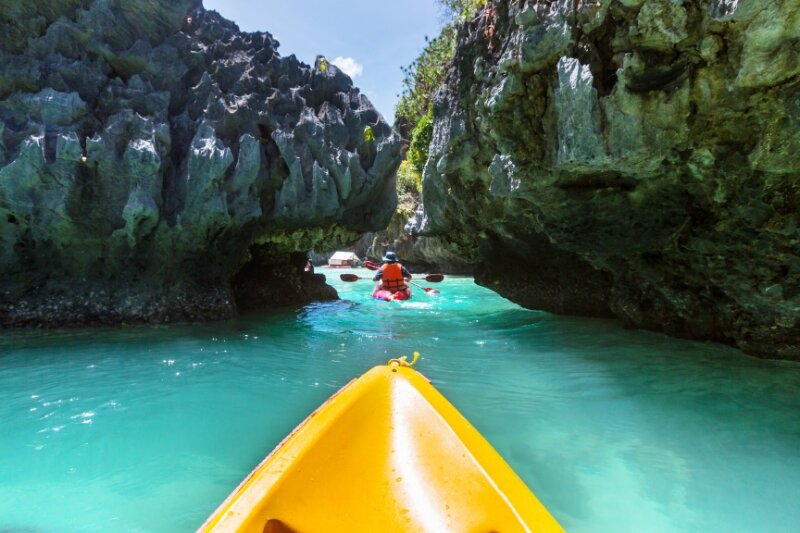
Then ensure you have the right angling setup for each area. If you’re targeting larger fish in rocky or weedy areas, then heavier tackle than normal is a good idea. We like a 3500 + sized spinning reel, 25lb+ line and the same strength leader. With a surplus of diving, surface and sub-surface lures and poppers.
A Guide to Buying a Fishing Kayak
And of course, check the weather conditions, Bring a waterproof, long-sleeved top, sunglasses, sun-cream and water where appropriate. particularly when out on the ocean. It’s not a forgiving place.
One of the biggest positives of kayak fishing is your ability to troll when searching for new marks. If you’re doing this make sure your rod and tackle are strong enough to handle the strike and you have visibility on the rod tip.
Kayak fishing checklist for beginners
- Bring your safety equipment
- Check for any rips or leaks
- Pre-rig your rods and ensure you have rod holders setup
- Have a spare paddle, or at least a paddle leash
- Check the weather and tidal conditions
- Bring sun protection gear
- Pack plenty of fishing tackle
- Pack enough water and food for the trip
- Take care of the fish
A Guide To The Essential Kayak Fishing Accessories and Setup
The 9 best kayak fishing tips
Try before you buy
Fishing kayaks are fantastic pieces of kit and can help you reach areas otherwise inaccessible by boat and foot. They have an innate ability to travel over waters too shallow for boats and too deep for walking. However, they are an expensive purchase and one that can take up a substantial amount of room when packed. So make sure you love fishing from a kayak enough to purchase one and you choose the right type of fishing kayak.
Pick the right type of fishing kayak
There are a number of different types of fishing kayaks, the most common of which are;
- Inflatable fishing kayaks: superb for city dwellers and those short on space
- Sit-on-top fishing kayaks: most comfortable
- Standup fishing kayaks: best for longer casts
- Sit-inside fishing kayaks: traditional kayak setup
- Multi-person fishing kayaks: best for families or couples and for long trips
- Pedal-driven fishing kayaks: ideal for casting and moving
- Saltwater fishing kayaks: generally wider for improved stability
- Freshwater fishing kayaks: generally more transportable
Ultimately you need to consider what type of fishing you’ll primarily be doing from your kayak and what the prevailing weather conditions are likely to be. If you’re fishing in the sea, then a saltwater kayak is essential. Particularly if the prevailing sea conditions change quickly with high winds or swells. If you’re looking for a kayak that allows you to cast serious distances and are experienced enough, then a standup kayak is your best option.
For comfort, the sit-on-top kayaks are a personal favourite. Tight hips and back discomfort are not uncommon when sitting in a kayak for hours. So having a sit-on-top, pedal-powered kayaks are the pick of the bunch.
Invest in good safety equipment
Kayak fishing can be dangerous, particularly for beginners out on the open ocean. Going out with a more experienced partner and checking the wind speed and tidal conditions is unequivocally the best safety advice for beginners going out on the ocean.
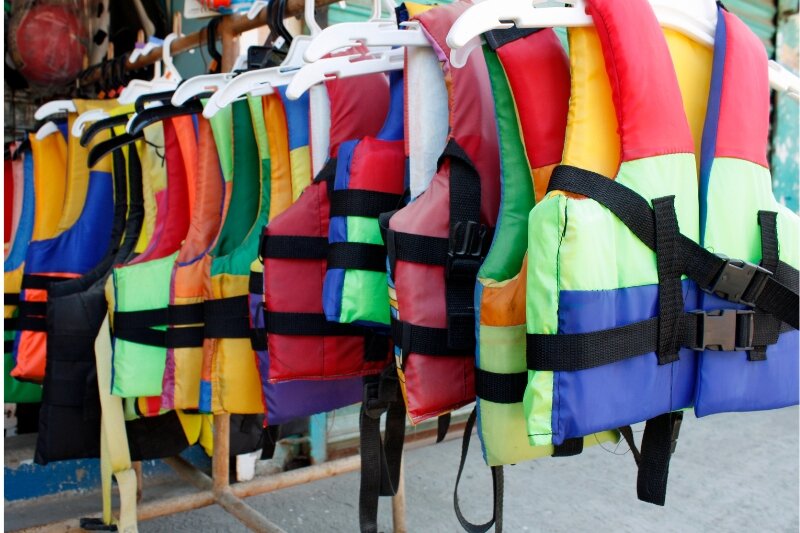
Additionally, you should invest in a quality personal flotation device (PFD), a paddle leash, suncare, water, a first aid kit, some sort of light source and a communication device are all kit bag essentials. Then, depending on conditions, sun care equipment and other weather-specific gear like a good fishing waterproof could make your experience much less miserable.
The best PFDs come complete with accessories like whistles, a high-powered flashing light, a personal locator beacon and a spray hood. All of which you’d be very grateful for if you capsize in compromising conditions.
Always check the weather forecast
This is particularly important if you’re going kayaking out on the open water or on longer expeditions. High wind and spring tides can cause some seriously dangerous conditions for kayaking. We’ve had a few close calls off the south coast of the UK when we’ve misjudged the impact the wind has on the sea and it isn’t particularly pleasant.
It’s not just the wind and swells you have to worry about either. If the sun is beating down all day you need to cover up and protect your skin and eyes from the sun’s UV radiation. Whilst rain may seem largely placid, thunderstorms can be a real cause for concern out on a kayak, so be prepared for any eventuality.
Going out on longer trips is not advisable for beginners. Particularly in adverse weather conditions. So make sure you understand how the wind will impact your stability and how powerful the tide is where you’re fishing.
Check the tide
Whilst this is mainly a concern for sea kayakers, certain rivers, estuaries or other bodies of freshwater are tidal or fed directly by the sea. So make sure you understand whether the tide is going to impact the marks you’re looking to fish. Of course, the tide is going to greatly impact your ability to catch fish at certain marks, some of which may only be accessible at very high tide. If you’re looking to access these fishing spots then be sure you aren’t going to get stranded at low tide.
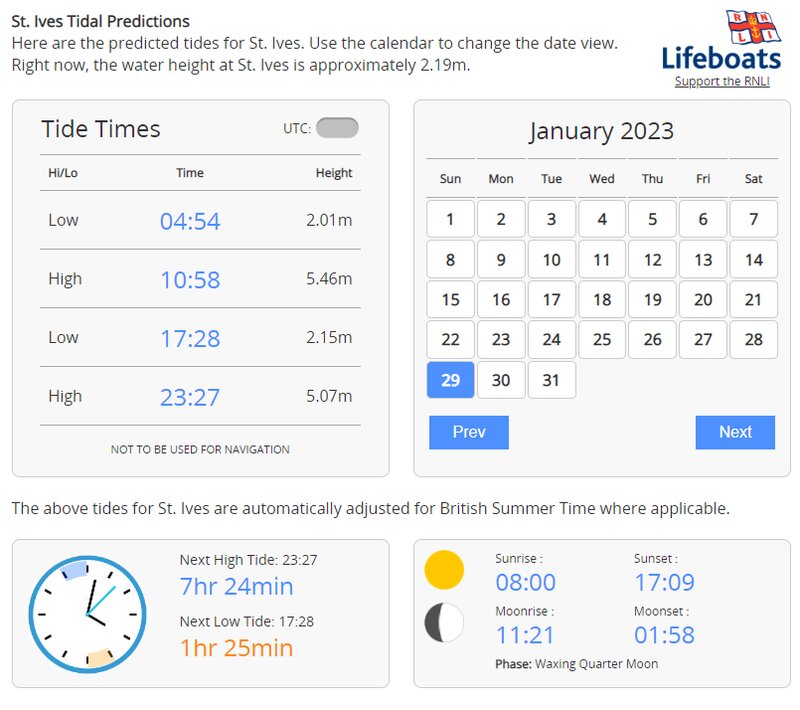
Purchase the necessary accessories
Kayak fishing requires more effort and expense than traditional fishing, but it opens up whole new worlds for the average angler. In order to maximise your chances you need to set your kayak up for:
- Comfort: a sit-on-top kayak is the most comfortable in our opinion, but you can also consider a stand-up kayak option
- Safety: a lifejacket is an absolute essential, but consider a paddle leash, whistle, GPS equipment and a light in case of emergencies
- Organisation and storage: rod holders are a crucial part of any fishing kayak, but you also need a tackle box or a cooler and a way to hold your fishing net, pliers etc.
- Efficient, effective fishing: pre-setup rods (including a spare rod and reel), pre-rigged spares, a fish-finder and polarised sunglasses will all set you up for more efficient fishing out on the water
- Fish care: take care of the fish you catch. A landing net, pliers, a disgorger or a way of safely unhooking the fish and releasing them quickly
- Fish finder: The best kayak fish finders are an incredible addition to a kayak, particularly if you’re out on the open ocean
Bring a dry bag
Obviously, no one goes anywhere without a phone in 2023. And whilst the majority of brand new models are waterproof, you should still take a dry bag in case of emergencies. Outside of electrical goods, if you’re going out on longer trips and have things like fire lighters or matches that you can’t afford to get wet, then you need a dry bag. An inexpensive, essential piece of kit.
Familiarise yourself with local laws and regulations
Local laws and regulations don’t just relate to the size of fish you can catch and keep, but where there are restricted zones where fishing is regulated or completely prohibited. Off the back of the UK leaving the EU, the UK has more Marine Protected Zones than ever before. So you need to know where you can and can’t fish as well as what fish you can and can’t keep. Certain lakes and bodies of freshwater will be private fishing waters or completely restricted, as will fishing in certain harbours and docks.
Fishing Licenses in the UK: What You Need to Know
Learn how to handle fish effectively
This isn’t specific to kayak fishing, but catching and landing fish in a kayak – particularly big fish -is different. You’re less stable and more at the will of the water, so requires a combination of equipment, experience and technique. So make sure you have a landing net, pliers and a method of landing fish safely. For both yourself and the fish. Then ensure your kayak handling skills can keep you in a safe, stable position when trying to land the fish.
FAQs
What equipment do I need to start kayak fishing?
Can I fish from a kayak in the UK?
For example, fishing from a kayak in the Lake District can be a superb activity. But in some bodies of water (like Brassenthwaite Lake) you’ll need a permit to use a kayak.
Are there any specific kayak fishing laws and regulations in the UK?
How do I safely handle and release fish from a kayak?
How can I safely transport a fishing kayak on my car?
It’s also worth checking the weather conditions as high winds can really affect your car’s handling when a kayak is added to it.
How do I properly rig a kayak for fishing?
If you want to take it to the next level, then investing in a pedal-powered or motorised system, a sit-up chair or stand-up kayak for longer casting and greater comfort and fantastic choices.
